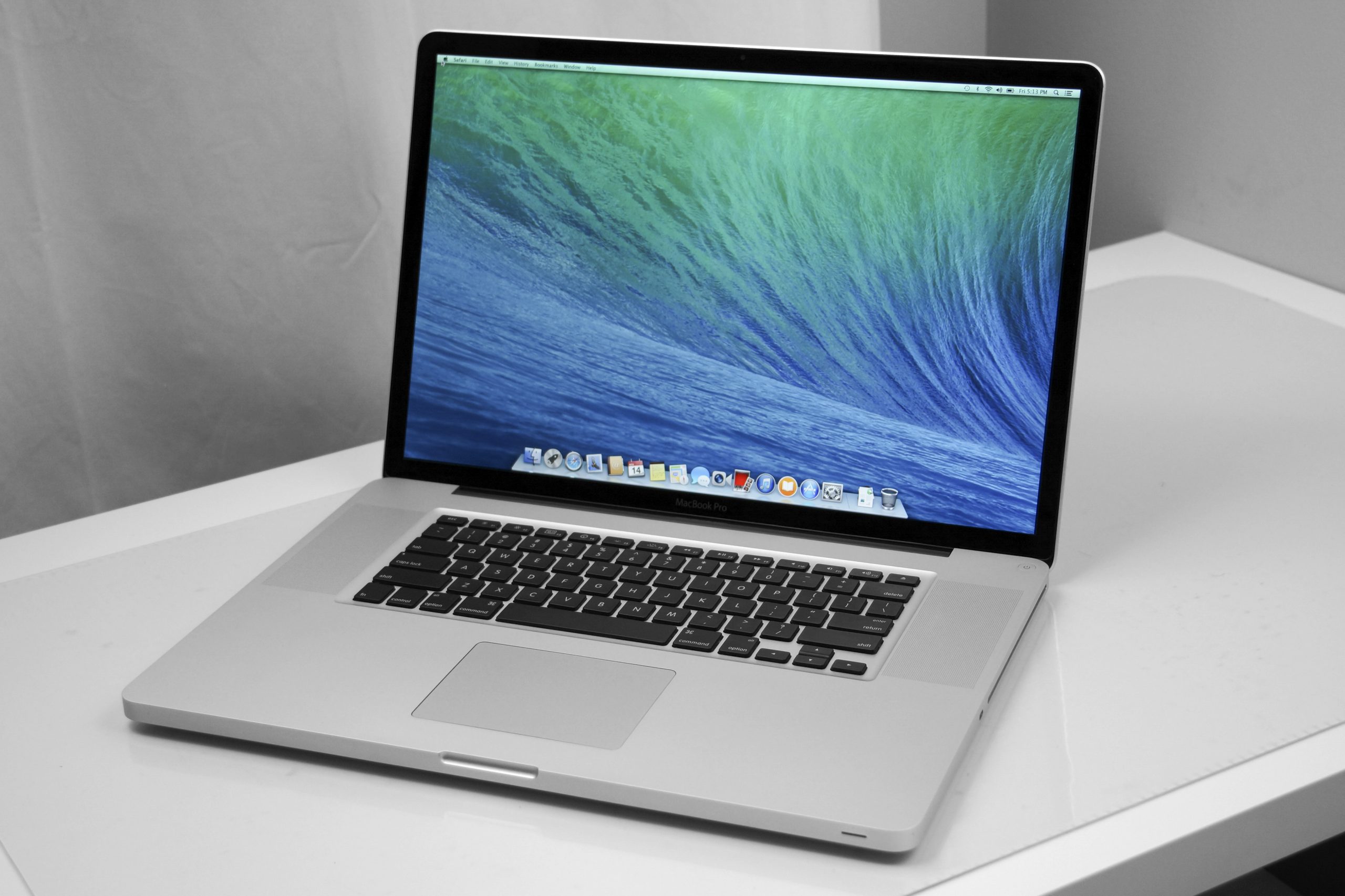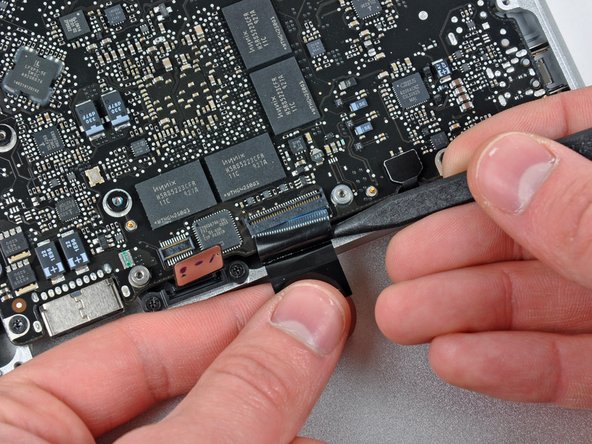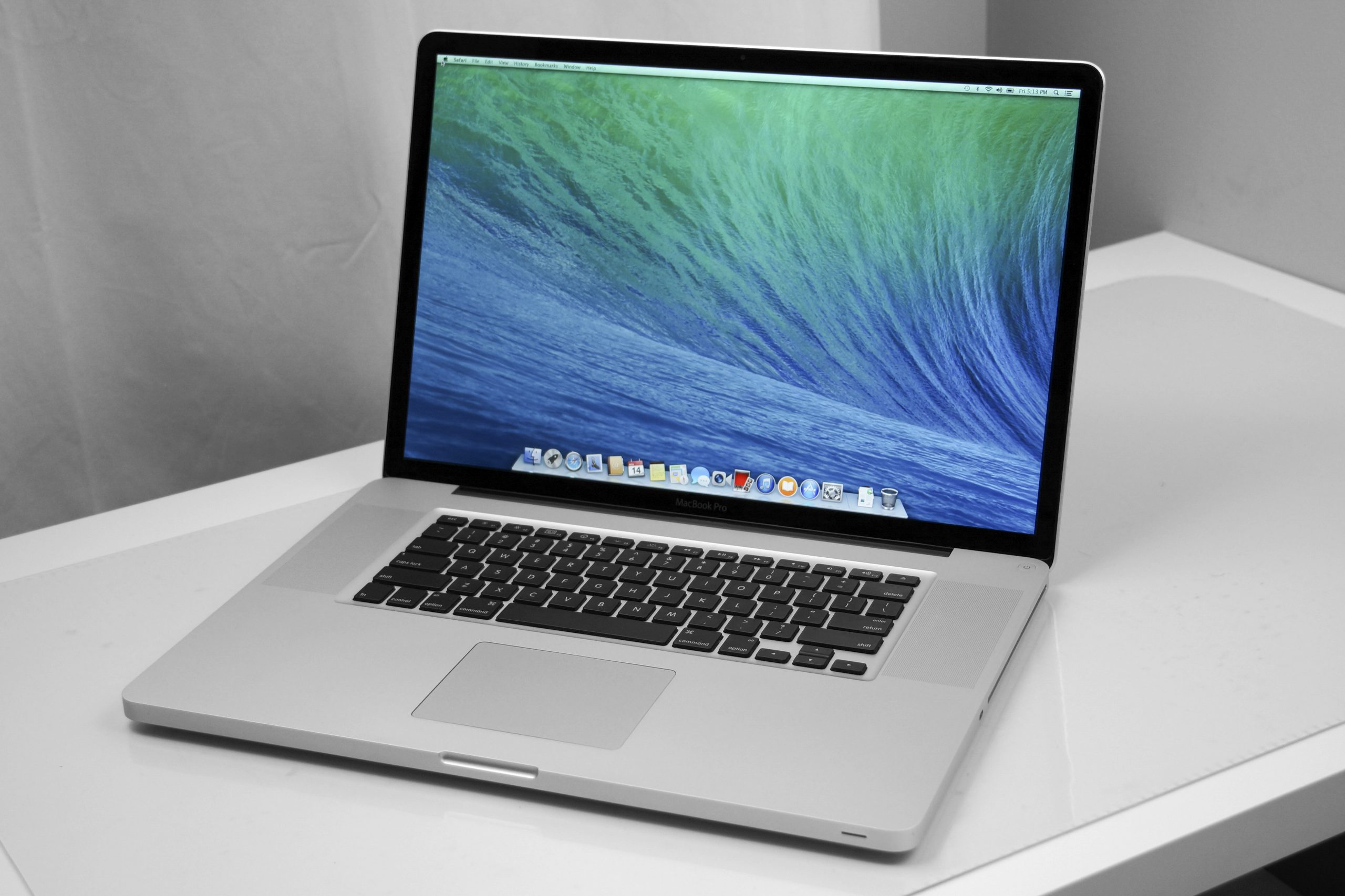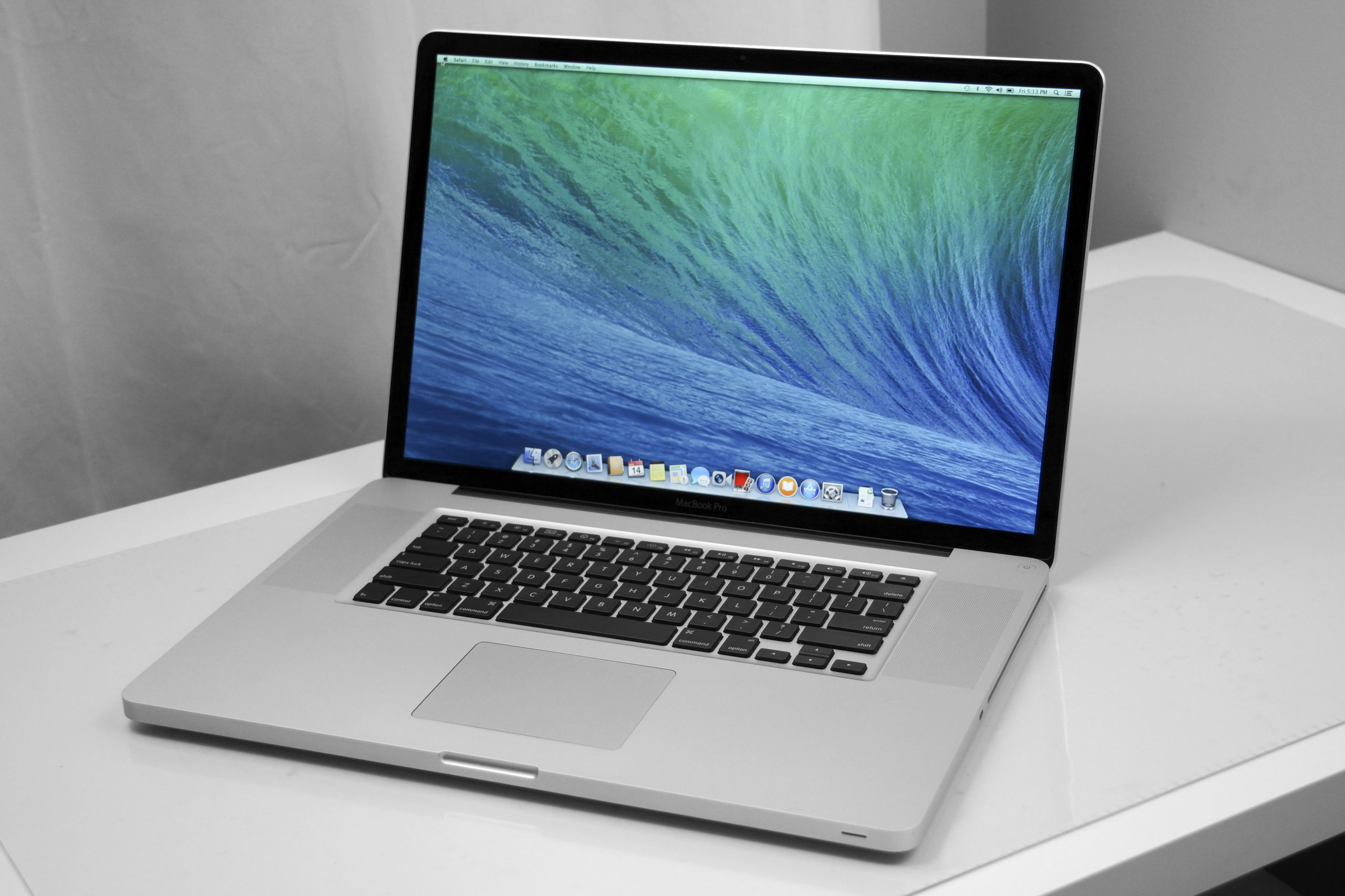How to Replace MacBook Pro 15 Heat Sink – Step-by-Step Guide
Duration: 45 minutes
Steps: 30 Steps
Hey there! Just a friendly reminder: if you run into any hiccups along the way, don’t sweat it! You can always schedule a repair with us at Salvation Repair. We’re here to help you get back on track!
Step 1
– Take out those ten screws that are keeping the lower case snugly attached to the upper case. You’ve got this!
Step 2
– With a little finesse, use both hands to gently lift the lower case near the vent. Give it a little nudge to pop it off the two clips that are holding it snug against the upper case.
– Once you’ve freed the lower case, go ahead and set it aside like a pro.
Step 3
You don’t have to go through steps 3-6 to pop out the battery when you’re swapping out the hard drive. But hey, it’s a smart move to disconnect all power sources from your gadgets before diving in!
– Unscrew the two 5-Point Pentalobe screws located at the top edge of the battery. You’ve got this!
Step 6
– Gently tilt the battery back to reveal the battery cable connector. You got this!
– Carefully pull the battery cable connector away from its cozy spot on the logic board and lift the battery out of the upper case. Easy peasy!
Step 7
– Grab your trusty spudger and gently nudge the fan connector straight up from the logic board – it’s like giving it a little lift-off!
– For an extra touch, you can twist the spudger a bit from beneath the fan cable wires to help free the connector. Teamwork makes the dream work!
Check out the second and third pictures to spot the fan socket and connector! Just a friendly reminder: when you’re using your spudger to gently lift the fan connector straight up and out, be super careful not to snap that plastic fan socket off the logic board. The layout in the second picture might look a tad different from your device, but no worries—the fan socket is still the same. If you need help, you can always schedule a repair!
Tools Used
Step 8
– Unscrew those three T6 Torx screws holding the left fan snugly to the logic board.
– Gently lift the fan out of the upper case and give it a little wiggle if it’s feeling stubborn.
Step 9
– Grab your trusty spudger and gently use its flat end to unplug the left fan connector from the logic board. You’re doing great!
– Carefully pry up from underneath the wires. Take your time; you’ve got this!
Tools Used
Step 10
– First up, let’s tackle those three T6 Torx screws holding the left fan snugly against the logic board. Grab your trusty screwdriver and get to work!
– Once those screws are out of the way, gently lift the left fan out of the upper case. You got this!
Step 11
When you’re shifting the strip (cable retainer) aside, just a friendly reminder: watch out for those tiny surface-mounted components on the logic board—let’s keep them intact!
Gently pull the connector parallel to the face of the logic board; it’s a smooth move, not a straight-up lift!
The camera cable connector doesn’t have any fancy locking or snapping features to keep it in place. So, Apple cleverly uses a little strip of black adhesive plastic on the side facing the logic board, right behind the camera cable connector, to hold it snugly in its spot. If you need help, you can always schedule a repair.
– With one finger, keep the end of the cable retainer down while you gently lift the other end using the tip of a spudger and swing it away from the camera cable connector.
– Now, disconnect the camera cable by pulling the male end straight out from its socket.
Tools Used
Step 12
Gently slide the connector out parallel to the logic board’s surface—no need to pull it straight up!
– Gently pull the camera cable’s male end straight out from its socket. You’ve got this!
Step 13
– Gently slide the flat end of a spudger under the optical drive cable connector and lift it off the logic board with care. You’ve got this!
Tools Used
Step 14
Take it easy when prying the connector—focus on that, not the socket! You wouldn’t want to accidentally lift the socket off the logic board. Stay cool and steady!
– Grab your trusty spudger and gently lift the subwoofer connector straight up from the connector jack. You’ve got this!
Tools Used
Step 15
– Gently coax the hard drive/IR sensor cable connector off the logic board using the flat end of a spudger.
Tools Used
Step 16
– Unscrew those two 1.5 mm Phillips screws holding the cable cover tight to the logic board. You’re almost there!
– Carefully lift the cable cover out of the upper case. You’ve got this!
Step 17
– Grab your trusty spudger and gently lift the trackpad flex ribbon cable connector off the logic board. You’ve got this!
Tools Used
Step 18
Before you try to wiggle that keyboard ribbon cable out of its cozy socket, remember to unlock the ZIF socket first! These ribbon cables are delicate little things, and too much force can turn them into confetti. So take it easy and be gentle!
– Time to get your fingers in the game! Gently use your fingernail to lift the locking flap on the ZIF socket where the keyboard ribbon cable hangs out. Remember, the flap is on the opposite side of the socket from the cable, so hook your nail under it and give it a careful upward lift.
– Now, grab your trusty spudger and slide that keyboard ribbon cable right out of its cozy socket. You’ve got this!
Tools Used
Step 19
– Grab your trusty spudger and gently nudge that battery indicator ribbon cable connector away from the logic board like a pro!
Tools Used
Step 20
– First up, grab your trusty screwdriver and take out that single 7 mm Phillips screw holding the display data cable retainer snugly to the upper case.
– No worries if this little screw decides to stick around in the display data cable ground loop! If you’re swapping out the display, just remember to move this screw over to the new unit.
– Now, gently lift off the display data cable retainer from the upper case and you’re one step closer to your repair!
Step 21
– Give that plastic pull tab a gentle tug and swing it over towards the DC-in side of your computer. You’ve got this!
Step 22
Remember, when you’re disconnecting that connector, slide it out parallel to the logic board’s face—no need to yank it straight up! Keep it smooth and steady!
– Gently wiggle and then pull the display data cable connector straight out of its socket, like you’re giving it a little hug goodbye.
Step 23
– Grab your trusty spudger and gently lift the flap that holds the keyboard backlight ribbon cable in place.
– Now, with a steady hand, pull the keyboard backlight ribbon cable straight out of its cozy socket.
Tools Used
Step 24
Hold your horses! Before you go yanking out the logic board, remember there are some sneaky components on its underside that are still connected to the upper case. Let’s disconnect those first!
– Time to get those screws out! Grab your trusty screwdriver and let’s unscrew the following screws:
Step 25
Remember, don’t yank out that logic board just yet!
– Gently lift the logic board assembly from the left side and wiggle it out of the upper case, keeping an eye on the port side that might get a little snagged during the process.
Step 26
– Gently lift the logic board just enough to create some wiggle room, and use a spudger to nudge the microphone free from the upper case.
– Carefully slide the logic board away from the port openings and lift the whole assembly out of the upper case like a pro.
– Before you pop the logic board back in, it’s a good idea to press the microphone snugly into its spot in the left speaker to keep it nice and secure.
Tools Used
Step 27
– Gently slide the logic board away from the port openings and lift it out of the upper case like a pro.
– Before you pop the logic board back in, it’s super helpful to press the microphone down into its cozy spot in the left speaker to keep it snug.
Step 28
If you see it, go ahead and peel off the tiny black sticker that’s hanging out over one of the heat sink screws.
– Gently place the logic board on a soft, flat surface with the heat sink facing up. You’re doing great!
Step 29
Hey there! Just a friendly reminder: when you’re loosening those screws, give them a gentle nudge—no need to go all Hulk on them!
Make sure to keep an eye on those springs under the screws as you take them out.
If by chance, the heat sink seems glued to the logic board even after removing all eight screws, consider using a spudger to gently pry them apart.
– Start by unscrewing those eight Phillips screws holding the heat sink snugly to the logic board. You’ve got this!
– Gently lift the heat sink off the logic board like you’re unveiling a masterpiece.
– If you’re planning to put that heat sink back in, don’t sweat it! We’ve got a handy thermal paste guide that makes swapping out the thermal compound a breeze. If you need help, you can always schedule a repair.
Tools Used
Step 30
If the heat sink seems a bit stubborn after you’ve taken out all eight screws, don’t sweat it! A spudger can work wonders to gently pry apart those two components.
Got to put that heat sink back on the logic board? No worries! Check out our thermal paste guide for a smooth and easy way to swap out that thermal compound.
– Gently lift the heat sink away from the logic board, taking your time to avoid any mishaps.
Tools Used














































